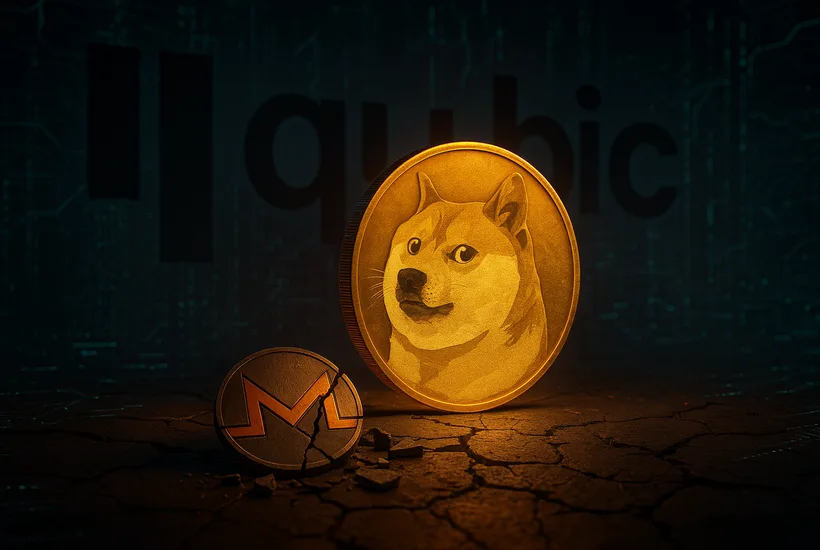- Six blocks were rearranged when Qubic’s mining pool launched a 51% attack against Monero.
- Dogecoin was chosen by the community to be the next proof-of-work network to be targeted.
- Dogecoin’s $35 billion security and PoW resilience are called into question by a possible assault.
Considering the successful demonstration of a 51% attack on Monero earlier this week, Qubic, the project headed by blockchain pioneer Sergey Ivancheglo, has now focused on Dogecoin. By a significant margin, the community favored targeting Dogecoin over Zcash and Kaspa, the organization confirmed.
Days prior to the decision, Qubic declared that its mining pool had taken over Monero’s network, rearranging six blocks and thereby demonstrating its ability to alter blockchain history. The action made exchanges like Kraken briefly suspend deposits while Monero remained open, underscoring the very real dangers of concentrated mining power. Ivancheglo requested the Qubic community to vote on the next proof-of-work network to “stress test” after the event, and Dogecoin was the overwhelming winner, with almost 300 more votes than all the other possibilities put together.
Newsletter
Get weekly updates on the newest crypto stories, case studies and tips right in your mailbox.
The risks for Dogecoin
Despite a market valuation of more than $35 billion, Dogecoin is currently in danger of seeing a similar attack. When one party controls the majority of a blockchain’s mining hashrate, it can censor transactions, rearrange previous blocks, and even try double-spending assaults. This is known as a 51% attack. Currently, Qubic maintains majority control over Monero by controlling about 2.3 GH/s of its hashrate. Given the network’s popularity and user base, the impact may be far greater if similar resources were allocated to Dogecoin.
Qubic has defined its actions as stress tests meant to demonstrate the robustness of its own mining model, referred to as beneficial proof-of-work, rather than as hostile attacks. Its mining pool’s profits are used to purchase and burn QUBIC tokens, increasing the ecosystem’s value. Notwithstanding these guarantees, the group’s tests have rekindled discussions regarding the security of proof-of-work blockchains and their adaptability in a time when mining is becoming more concentrated.
Although no timeframe for the Dogecoin operation has been given, the announcement has already generated a lot of interest in the coin’s security posture and the possible responses from its developers and exchanges.
 Rita Dfouni
Rita Dfouni









